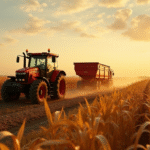Introduction to the Food and Agriculture Organization (FAO)
The Food and Agriculture Organization (FAO) of the United Nations monitors global food price trends. Recently, they reported a slight increase in worldwide food prices for essential commodities in June.
June’s Global Food Price Index
The FAO’s food price index averaged 128 points in June, marking a 0.5% increase from May. This index tracks monthly fluctuations in internationally traded food commodities.
Comparison with Previous Months and Year
The index is currently 5.8% higher than June of the previous year but remains 20.1% below its all-time high in March 2022.
Price Trends for Key Commodities
- Cereals: The cereal price index fell by 1.5% to 107.4 points, which is 6.8% lower than the same period last year. The decline was primarily due to ample global supplies and increased competition from exporters like Argentina and Brazil for corn, barley, and sorgum.
- Oils: The vegetable oil price index rose by 2.3% compared to May, reaching 155.7 points—an 18.2% increase from June 2023 levels. This uptick was driven by higher prices for palm, rapeseed, and soybean oils.
- Meat: The meat price index hit a record high of 126 points, marking a 6.7% increase from June 2023 levels across all categories except poultry. This rise can be attributed to weather concerns in Russia, the EU, and the US.
- Dairy: The dairy price index increased by 0.5% from May, reaching 154.4 points with a robust annual growth of 20.7%.
Key Questions and Answers
- What is the FAO? The Food and Agriculture Organization (FAO) is a specialized agency of the United Nations that leads international efforts to defeat hunger. Subjects relevant to their mandate include agriculture, forestry, fisheries, food and nutrition security, and rural development.
- Why are food prices increasing? The rise in global food prices is influenced by several factors, including weather conditions affecting crop production, geopolitical tensions impacting trade, and increased demand for certain commodities.
- Which food groups saw the most significant price changes? The vegetable oil and meat indices experienced notable increases, while the cereal index saw a decline. Dairy prices also rose moderately.
- How do these price changes affect consumers? Higher food prices can lead to increased food insecurity, particularly for low-income households. Governments and international organizations work to mitigate these effects through policies and aid programs.






